I took a brief vacation last week along the coast of North Carolina. It was relaxing and fun to be sure. I was also aware of and slightly curious about the Voice Of America shortwave site, a slight distance inland in Grimesland, NC. Thus, I made arrangements to visit the facility on my way home. Chief Engineer, Macon Dail, was gracious enough to give us the guided tour. The facility is an engineering marvel. The scale and complexity are enormous. The entire facility is scrupulously maintained. Many of the transmitters and other equipment have been upgraded to make them more functional. I tried to take meaningful pictures, but in many cases, they simply do not do justice.
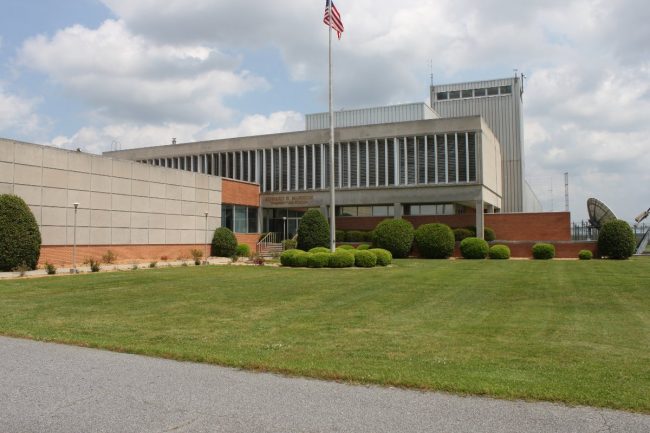
Officially known as the Edward R Murrow Transmitting Station of the International Broadcasting Bureau, VOA Site B was constructed in 1961. Six of the eight shortwave transmitters are original to the construction of the building. The other two (BBC SK55 and AEG S4005) were added in 1986. All of the dipole curtain arrays, rhombics, transmission line, and antenna switching matrices are also original. A few brief statistics about this site:
- Land area is 2,715 acres (1099 hectares).
- Over twenty-six miles (forty-two kilometers) of 300-ohm open transmission line rated at 500 KW.
- Sixteen dipole curtain arrays, average antenna gain 17 dBi.
- Twenty rhombic antennas, antenna gain 15 dBi.
- Two of the dipole curtain arrays can slew azimuth and take off angle.
- Three Continental Electronics 420A 500 KW Doherty modulated transmitters.
- Three General Electric 4BT250A1 250 KW high-level plate modulated transmitters.
- One Brown Boveri Company (BBC) SK55C3 500 KW PSM transmitter.
- One AEG Telefunken S4005 500 KW PDM transmitter.
- The antenna switch matrix connects any of the eight transmitters to any of the thirty-six antennas
While we were there, both of the newer transmitters were on the air, running at 250 KW. The GE transmitters are used as needed and the Continentals are rarely used due to age, difficulty to tune, change frequencies, and gross power inefficiency.
The station staff has, out of necessity, fabricated some very cool upgrades to the transmitters and facility. The first of which is the alarm annunciator, which is based on a Star Trek (Original Series) sound scheme. Once or twice I heard the bridge general alarm go off, followed by a female voice stating the problem: “GB8, OFF AIR.”
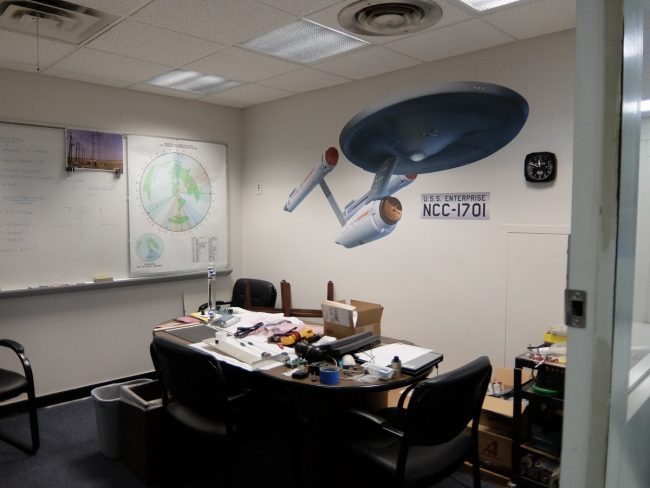
The GE 250 KW transmitters have been retrofitted with a computer-controlled auto-tune system for frequency changes. The antenna switch matrix controller has been replaced by a PLC-based system. As the transmitters are so old, many of the transmitter-specific parts need to be machined or fabricated locally. The rest of the transmitter parts are stocked in a large parts storage room, all of which are meticulously labeled and tracked. The floors are waxed and spotless, there is no dust on the horizontal surfaces, the workshop is clean, tools are put away, grass and weeds are cut, etc. All of these little details did not go unnoticed and indicated great pride by the staff in the facility itself.
The heart of the facility is the control room which consists of four rows of equipment racks and a central operating position elevated above floor level. Arranged around that are the eight shortwave transmitters in two long transmitter galleries.
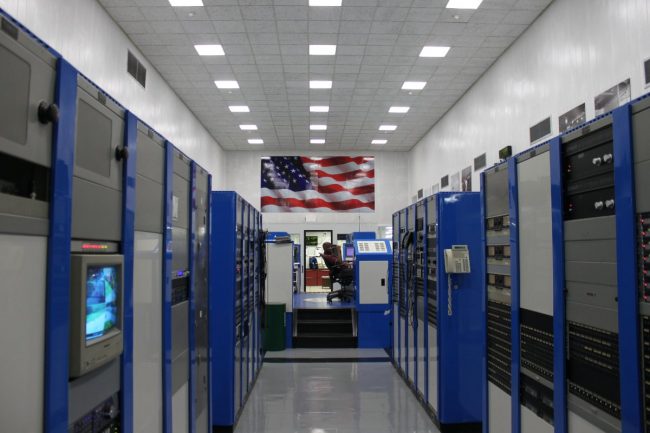
From this point, the operator can view all of the transmitters in the two transmitter galleries.
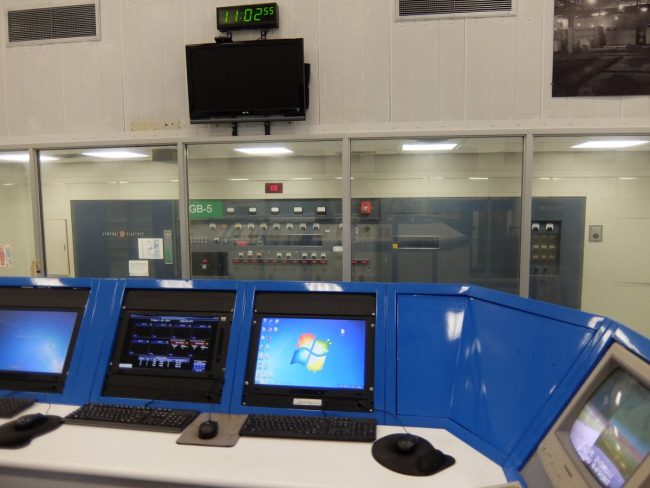
Around the control operator are arranged a series of computer monitors showing various station function status.
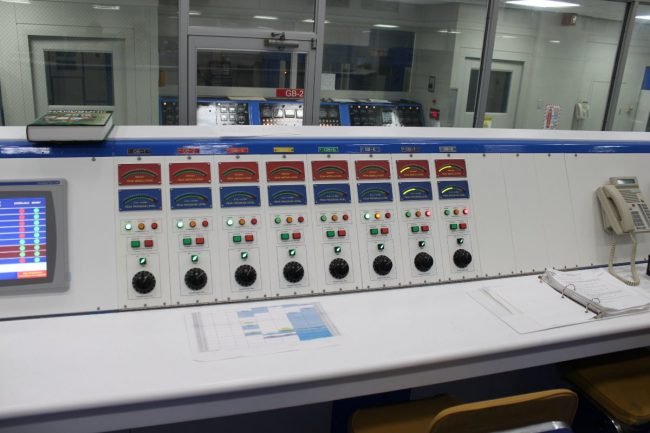
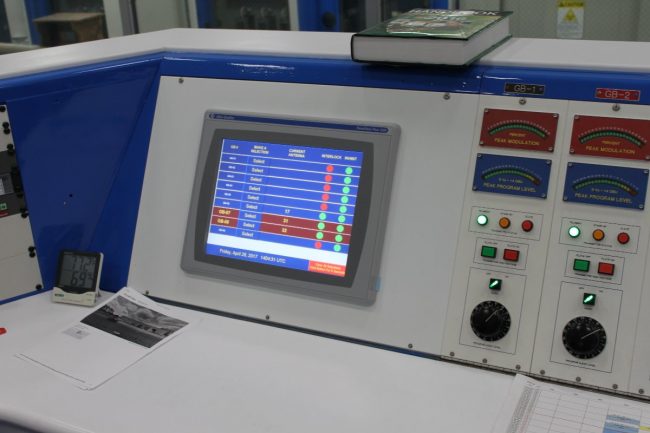
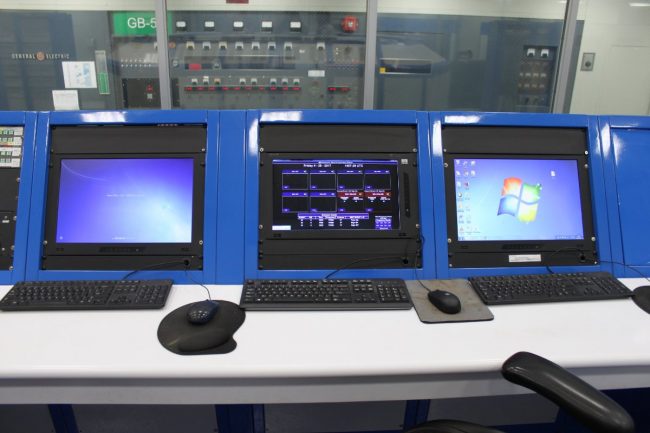
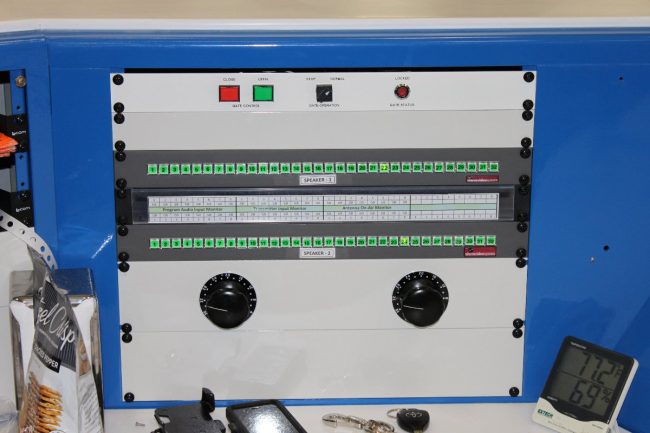
The equipment is installed into the equipment racks by type; one rack contains the frequency generators for each transmitter, the next contains first-stage power amplifiers, the next contains audio processors and modulation monitors, etc.
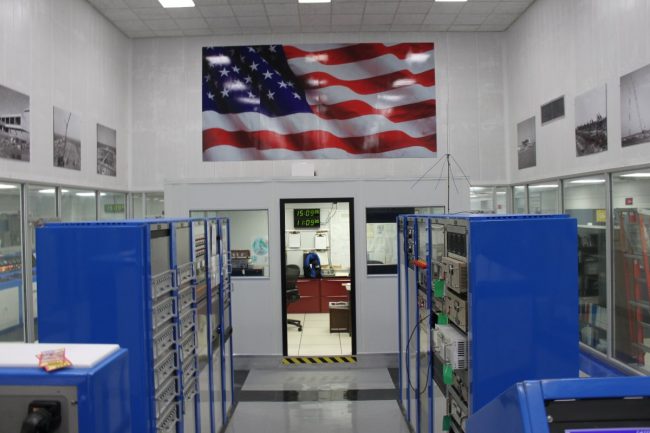
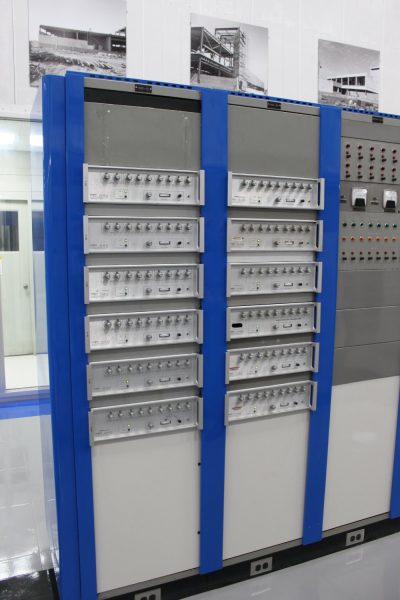
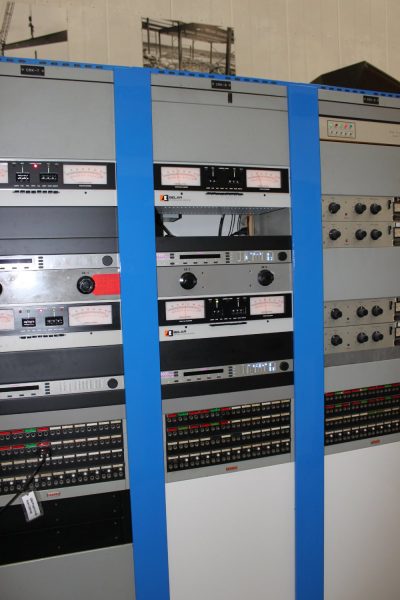
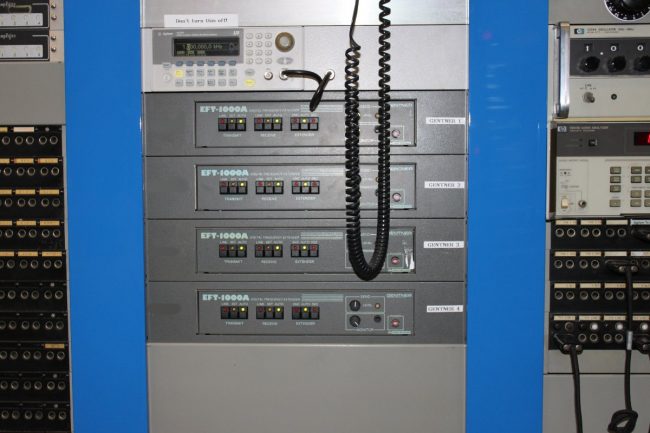
The audio comes from the VOA studios in Washington DC via satellite. There are Comrex Access links as a backup and the Gentner EFT-1000s are used as a backup to the backup. Prior to 1995, an eight-hop microwave system covering the 300-mile (483 KM) distance was used.
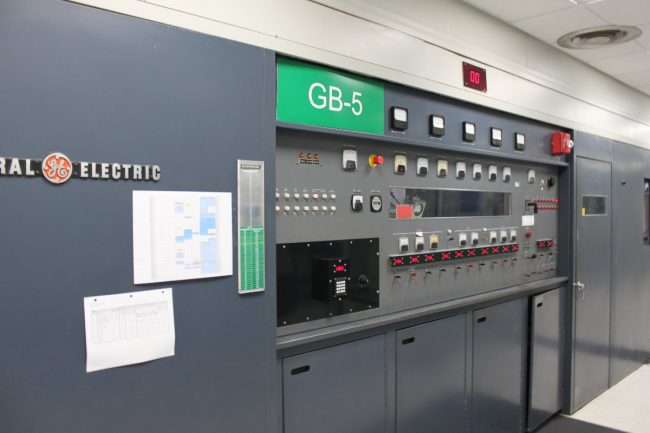
The station staff has created a computer-controlled tuning system for the GE transmitters. Each transmitter can change frequency several times a day, during each frequency change, all of the transmitter stages need to be retuned. When done by hand, this can take several minutes to accomplish. The computer system uses follow pots and microcontrollers to set the tuning elements to specific values. They can be touched up by hand if needed. A frequency change can usually be done in less than one minute.
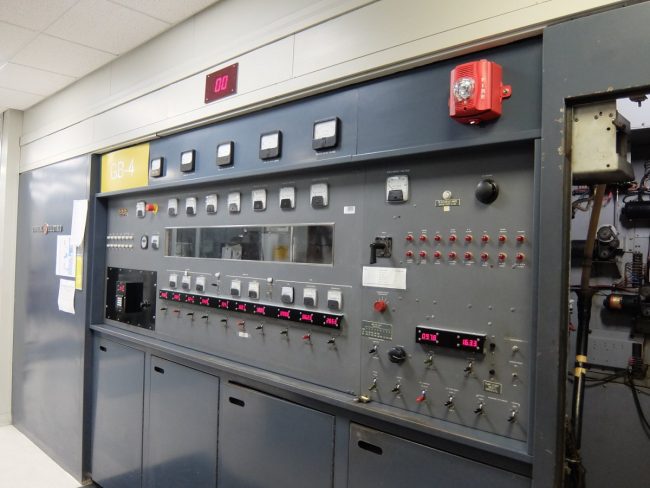
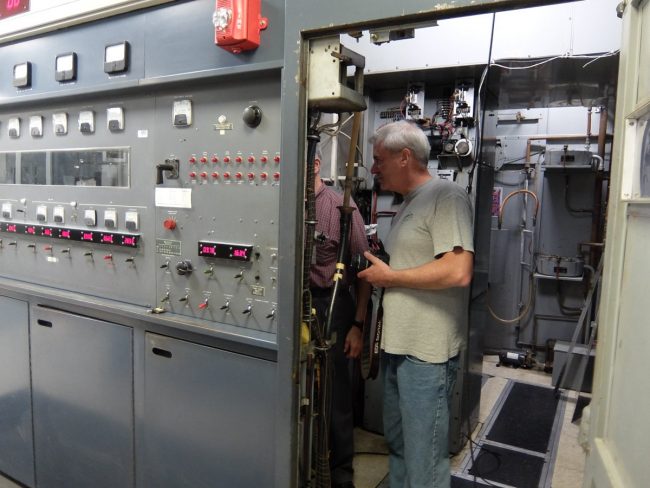
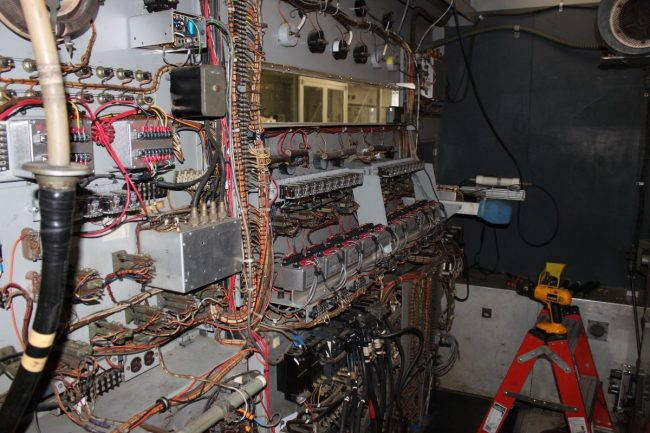
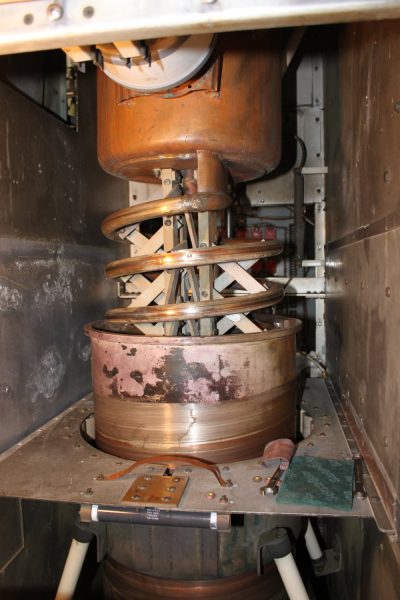
The 2nd IPA and PA input tuning work the same way. The copper sleeve slides up and down over the coil to change resonant frequency. The vapor-cooled tube sits inside the tub at the top, anode facing down. These tuning sections are a mechanical nightmare according to Macon. One of the reasons why VOA site A was closed down was due to the frequent frequency changes at that site causing excessive wear and tear on the old GE transmitters. This particular transmitter was being repaired; the staff was rebuilding a tuning network bypass capacitor assembly
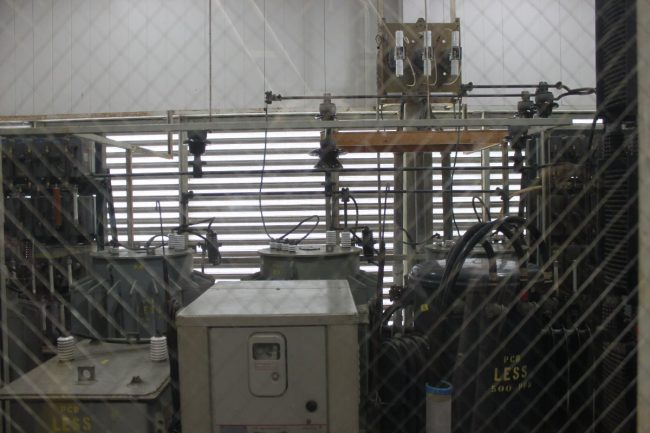
The GE transmitter transformers still contain PCBs. The plate transformers are in the back, basically pole transformers, one for each phase. Primary voltages are 4,180 volts, and secondary rectified voltages are 12 KVDC (PA plate supply) and 15 KVDC (modulator plate supply).
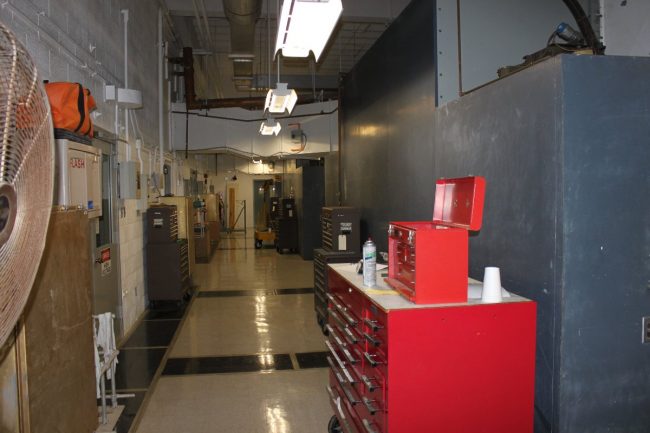
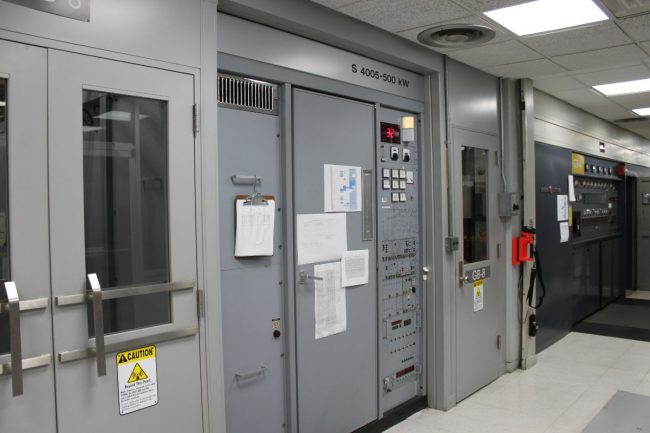
While we were there, the newer transmitters were in operation transmitting Spanish language programming to Cuba on 13,605 KHz and 11,930 KHz. Currently, the Greenville site is broadcasting mostly Spanish language programming with some English, French, and Bambara language programming for Africa.
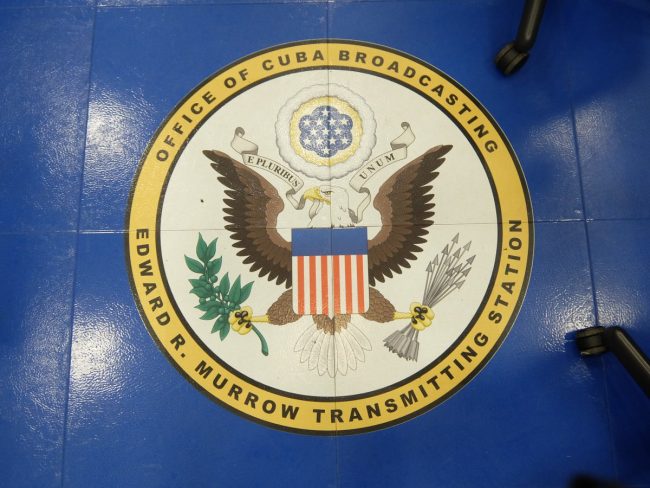
A fact that does not escape the notice of the staff.
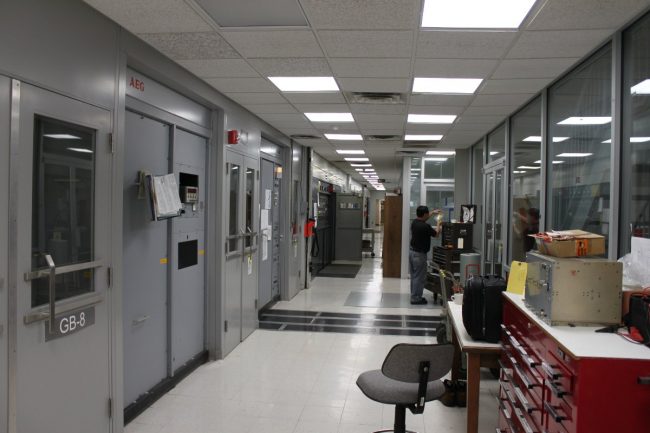
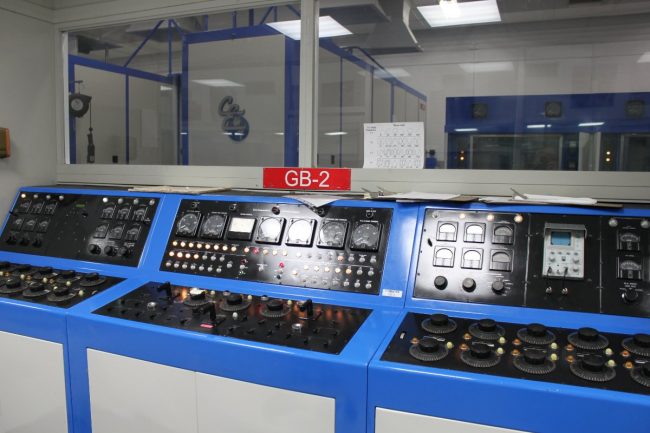
The three Continental 420A transmitters (GB-1, GB-2, and GB-3) are essentially a pair of 250 KW amplifiers combined. As these are Doherty power amplifiers, frequency changes are very difficult to effect. These transmitters spend most of their time in backup service.
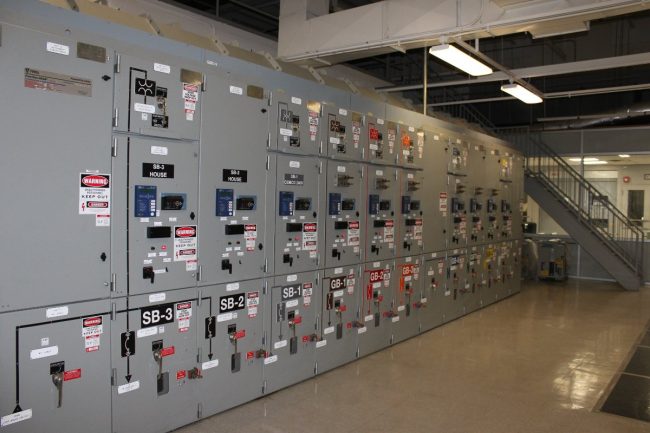
The antenna matrix building is very impressive. Routing eight 250 or 500 KW transmitters to 36 different antennas takes a bit of doing. Mechanizing that setup is no mean feat. The pictures I took of the antenna matrix building do not show the size and complexity of the system.
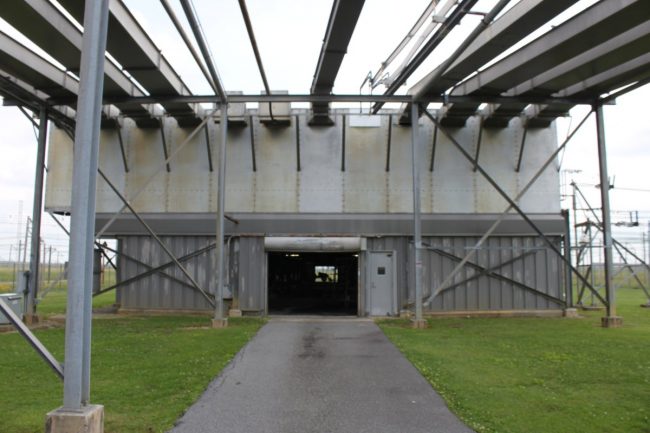
For that, we need a satellite photo:
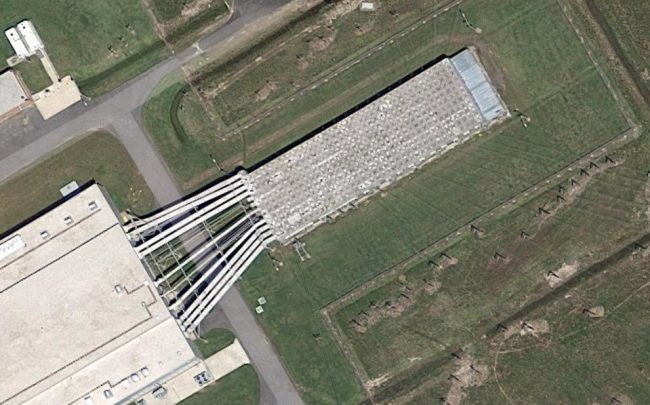
Basically, the transmitter building is in the lower left-hand side of the picture. The transmission line go over to the antenna matrix building (looks like rectangular ductwork), then runs all the way to the back of the building. Each antenna transmission line comes into the building and runs to the other side. Pneumatic arms then couple the transmitter line to the antenna line. This is all controlled by a custom-made PLC and controlled by the operator from the main operating desk.
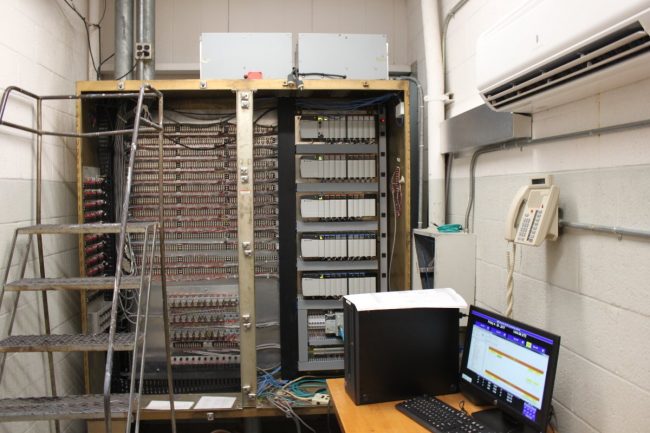
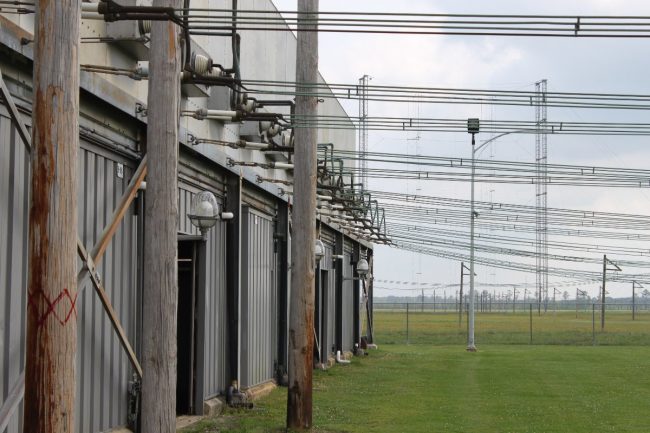
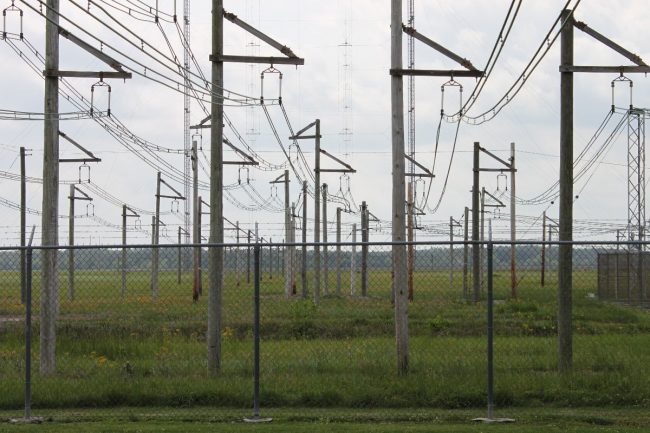
Some of these lines are very long but have low loss due to the air dielectric. The most used antennas are the dipole curtain arrays.
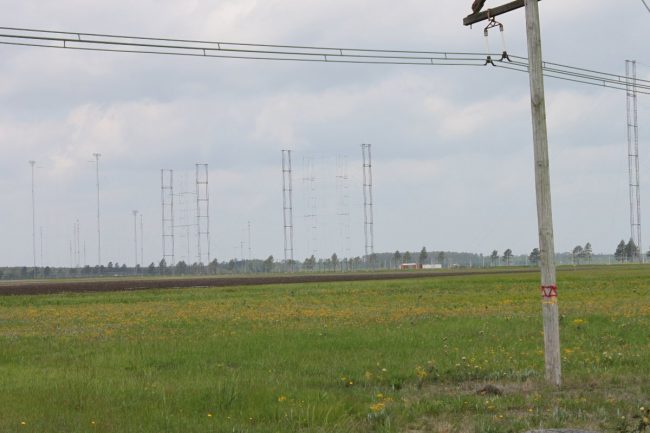
These consist of a series of broadband dipole antennas arranged side by side and stacked three or four high. behind those antennas is a reflector screen. There are two curtain arrays that are slewable. The dipole antenna’s phase relationship to each other can be changed to adjust the takeoff angle and azimuth, thus giving optimum coverage to the targeted area.
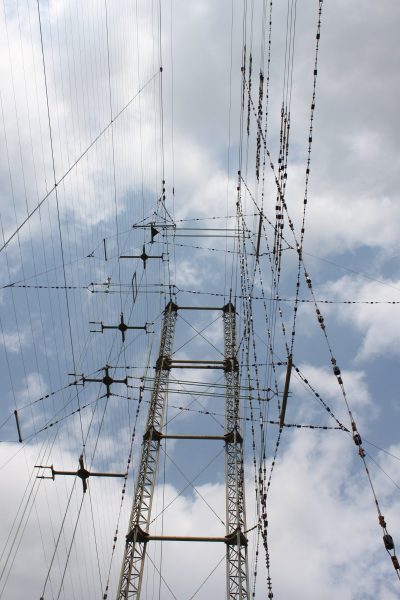
In this picture, the dipole antennas are to the right. Behind them is the reflector screen, and behind that is the antenna feed system. Each antenna feed goes through the reflector screen to the center of the dipole antenna.
Each array requires four towers to support it.
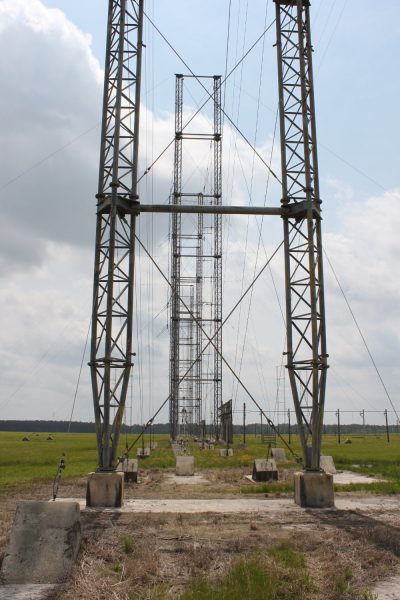
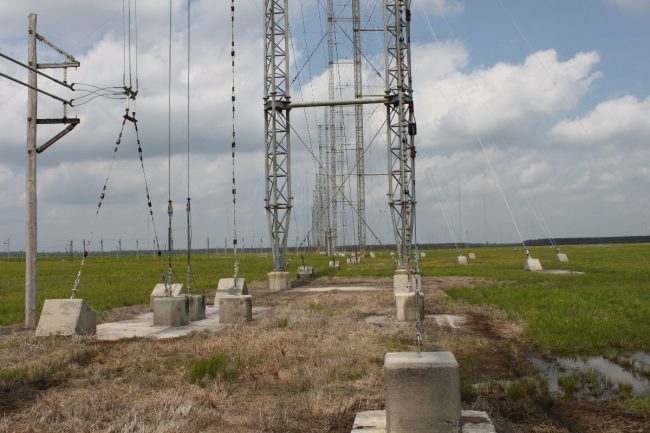
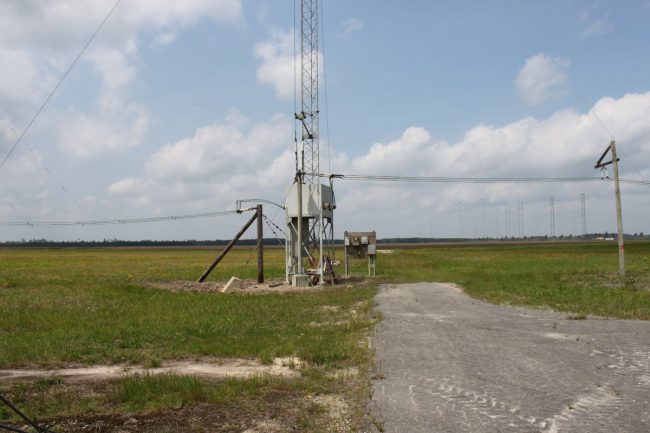
The entire antenna field is viewable from an observation platform on the main building
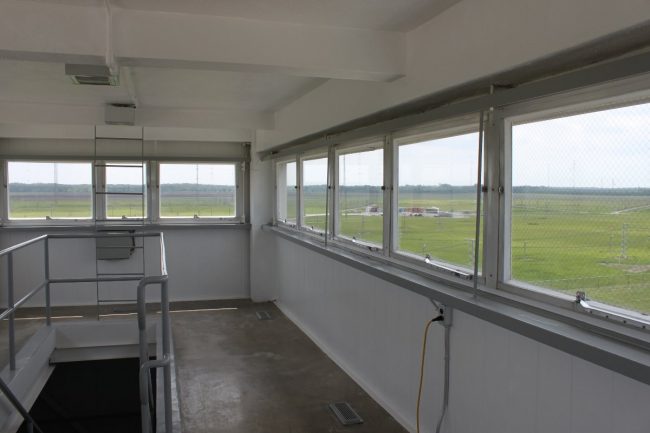
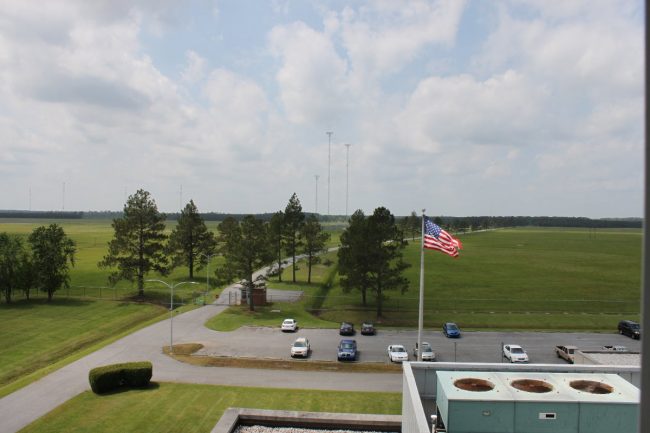
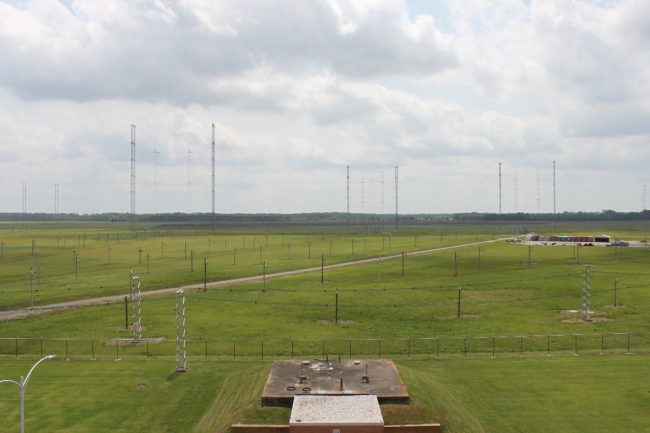
The entire facility is very impressive. The truth is, I could have spent several more hours there, but I know that people have jobs to do and I felt that I had taken up enough time. We often forget in this country that not everyone in the world has access to the internet. Shortwave broadcasting has a long reach and is not subject to government-controlled firewalls or other forms of electronic censorship. Currently, the Greenville site is broadcasting mostly Spanish language programming with some English language programming for Africa. There are many areas in the world that are in political tension right now, some startlingly close to home. Places like Brazil, Argentina, and Venezuela have been in the news lately. I do not see a time when these long-reach broadcasting services will not be needed. Becoming a welcome source of good information for those affected people is good for brand USA. It would be money well spent to invest in a couple of new Continental 419H (still made in the USA) DRM-capable transmitters for this facility. While the old GE and Continental units are great, the time may come when they are really needed but unavailable due to being down for repair.
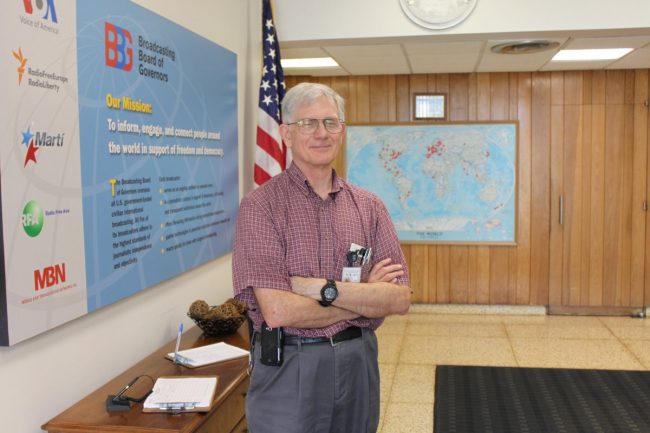
Special thanks to Macon Dail for his time, knowledge, and patience.



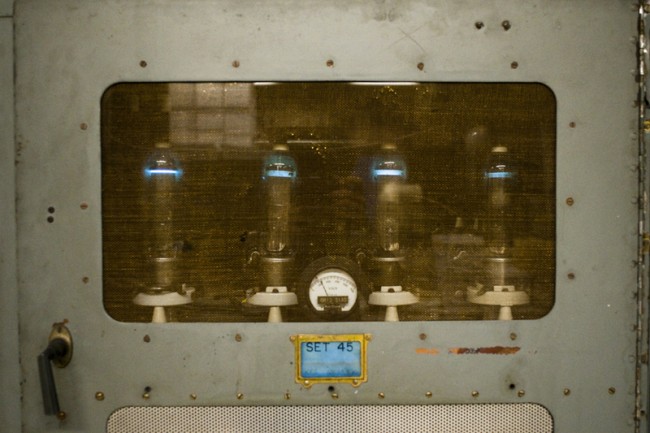
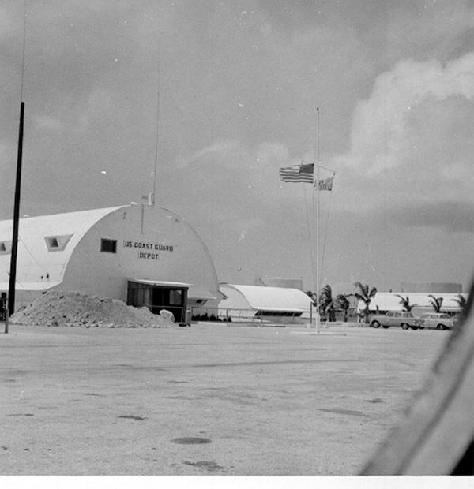
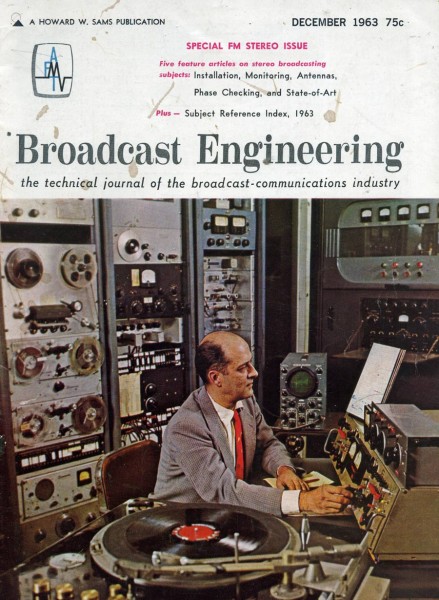
Wow, Paul, thank you for the tour!
Thanks Paul!
It’s posts like these that make me check here every couple of days. Great, great your.
You probably know that Site A, which was some distance from Site B, was demolished last year. The property of Site A, almost 3000 acres, will become a park. Site C, at yet another location, was a receive-only installation. Closed years ago, it is now occupied by East Carolina University. More detail is available at
https://en.wikipedia.org/wiki/International_Broadcasting_Bureau_Greenville_Transmitting_Station
Paul:
Great job! I’ve never been there, but I was fortunate enough to have spend several hours at the Mason Ohio site when it was still active. The old Crosley transmitters were still on the air. If you ever get to Birmingham, give us a call and come visit our little shortwave operation.
Dave WEWN EWTN Shortwave
These state broadcasters need to go away IMNSHO. Cut the funding. Legalize domestic SW broadcasting in the USA and limit power levels to 50 kW a la the MW band for SW broadcasts aimed over the continental USA. Between the VoA’s and Cuba’s propaganda can the truth be found? I doubt it so save the taxpayer’s money and let Cuba spew its wide-band noise on HF.
BJ/Christopher; glad you enjoyed the post!
David; If I find myself in Birmingham, I will take you up on your offer!
Tom; Ordinarily, I would tend to agree with you. However, having spoken with several people who grew up behind the iron curtain, they all feel that these types of broadcasts were very important information sources. As far as the current Radio Marti broadcasts are concerned, I don’t know my Spanish is not good enough to keep up with the conversation. I do agree with you on a domestic shortwave service, I think there are many people who could put out good programming at moderate power levels and reach a whole bunch of listeners. It would be great to see the HF broadcast bands put to more use.
This site is AMAZING!. Makes my 100kw FM station look like toy compared to this broadcast behemoth. Great article and pictures.
This place would be cooler if it didn’t broadcast the gusano-run Radio Marti.
Viva la revolucion Cubana!
Wonderful article. I (working for Harris), helped install the first megawatt MW solid state transmitter. It replaced a MW Continental. Memories of the glowing tubes hours after shut down still come to mind. It would be nice if someone continued this article by reviewing all the stations and their operations. This is a wonderful part of American history, and should not be lost.
Great article and pictures….was surprised to see those old GE boxes still operating.
Really delighted by that full explanation of a site that has been familiar only through the waves since the early 1960s when I became an avid DXer and short wave listener. Thanks a lot
The digital text- and image experimental series VOA Radiogram, which used to be broadcast from this VOA facility, is now broadcast weekends from WRMI and European outlets and has been rechristened Shortwave Radiogram. On the web it is swradiogram.net.
I was very honored to one in a group of 12 that toured the facility in early December, 2017. Our group consisted of Chief Engineers that take care of radio stations in various cities that are owned by Radio One, Inc. Macon was in heaven showing off his “baby” to a bunch of Radio “Geeks”. The pictures only scratch the surface of that incredible operation. The miraculous ability of the staff of engineers that have been able to maintain and operate with a very tiny budget and to keep the 50 year old transmitters running is a testament to their ability and pride of doing a magnificent job! I can’t wait to return and spend more time there. Great job to all involved!
This is a great article about a magnificent operation and engineering marvel. Back in the old days, before starting my career in electronics engineering, I used to tune VOA and dream about the day when I would be able to look at photographs of the equipment and antennas used to originate the transmissions. Thanks to this article and photographs part of my dream has come true. Now living in North Carolina after my retirement from the Civil Service (NSWC Crane) the dream to actually see the facility, talk shop with the people that operate it and actually see the facility, has come closer to fulfillment. I would love to have a guided tour of Site B even if it has to be short (I know people actually work there!). Special thanks to Paul for his article and to the good people that serve at this VOA facility. I hope to be able to meet some of them personally if only to thank them for their important contribution in forming the character of a young boy from Puerto Rico encouraging him (that’s me) to pursue a most rewarding career in communications and electronics engineering. I am still active as a ham radio operator hoping to reach via radio some of the people that undoubtedly tune in to the VOA broadcasts for their benefit and the glory of this unique country, the USA.
When I was a kid I listened to shortwave radio, and I wanted to grow up to be a shortwave radio engineer for VOA. I ended up working in commercial TV news operations for 30 years, and then did a career change, working now in the TV Library at VOA in Washington. I visited the Greenville site a few years ago and, just like the author, the experience blew me away. Macon Dail and his staff operate and maintain a facility that is every radio geek’s dream come true. I’m happy to report that Macon was summoned to Washington last year and received a prestigious VOA Gold Medal Award for his exemplary accomplishments in broadcasting.
I recently had the great fortune to tour Greenville B. The engineers (Gary K.) are super nice and love to show off the facility. I am a lifelong SWL. Back in the seventies and eighties when I was in my teens and twenties, I used to tune in to VOA religiously every evening to listen to “Report to the Americas” and all the programming to Africa afterwards until I fell asleep. I was in the back of the footprint of the Bethany relay station then. Who would have thunk that would all come to an end… sad. A question to anyone especially those working at VOA Washington… Are there any archives of those old programs? I would love to re-live some of them. 73 de “Eb” W9EB jgeberle@hotmail.com
My name is Doug Swoboda. My dad Maximillian Swoboda was an engineer for the VOA in the 50’s thru the 80’s when he retired. We were transfered to Greenville in 1960 along with 8 other families to start building the 3 sites there. I was only 9 at the time but remember going to watch Nelo Teer clear land for the antenna fields, building construction and even equipment installation. Recently after he passed I found many articles in magazines and news papers, office memos, photos and other memorabilia. Is there a museum or someone who would be interested in these items?
Doug, the VOA Bethany Relay Station at West Chester, OH. might want your memorabilia.
http://www.voamuseum.org
“Eb”
Great Transmitting Station.
Paul:
Your composition is sensational. Until today, I did not know that Site B was operational. I grew up montitoring the VOA from NY. Later, I had the opportunity to work with RCA and Gates vacuum tube transmitters, but nothing as large as this equipment. Your words and photos brought back positive memories, sir. I cannot thank you enough for this effort.
Great job! My father, Harold Greene, was a shift supervisor there when Dail and I were just boys at Rose High. God bless the VOA.
Thank you Paul! You brought back many memories. I came on duty with VoA in 1988 at the three site Greenville station, along with 12 others comprising the first Foreign Service field engineer staffing group. After six months of training at Site A, we entered hands on training at each of the sites under the tutelage of the local staff until we deployed to an overseas station.
Working and learning in Greenville was the thrill of a lifetime for a broadcast engineer and ham. The next thrill was building the new Morocco station which hosted ten 500kW transmitters.
John, thank you (and others) for your comment and service. Your story is interesting and I am glad that a post that is more than 6 years old is still getting attention!
Paul – Thank you for a well written and photographed article about the VOA Greenville site. We will be in Greenville at ECU mid December when our daughter Lauren (KA4LHC) is awarded her PhD. I plan to activate the VOA Gamelands which are now a Parks on the Air site K-6964. Also, hope to visit Site B.
Yearly ago, we activated the Murrow “Spy” Site as part of the North Carolina QSO Party. The building has very thick walls and offices behind bullet proof glass. We loaded up one of the Rhombics on 15M SSB. Sorta skipped over NC. We were asked to move frequencies, as we were interfering with a Net in the Ukraine !
BTW- the Voice of America Jazz Hour in Special English is credited with helping bring down the Iron Curtain.
Bob – Congratulations on your daughter’s successful PhD! That is a notable achievement. I am glad people are still finding and enjoying this article. My SO was born in the USSR; she has told me firsthand the impact that VOA, RFE, and RL had on the people in the Soviet Union. When it is available, the truth is a powerful antidote to lies.